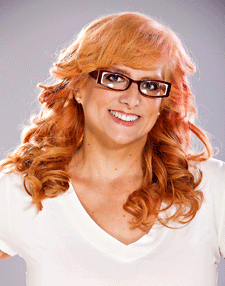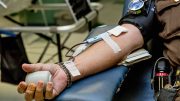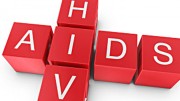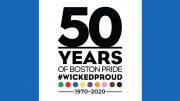By: Diane Anderson-Minshall*/Special to TRT—
It was little surprise when HBO’s Looking—a critically acclaimed but poorly rated TV series about gay men in San Francisco—introduced an HIV-positive character in season two. After all, the city was once the epicenter of the AIDS crisis and now has one of the nation’s highest rates of HIV-positive gay and bi men.
The real revelation, though, was that Eddie, the character Daniel Franzese (already popular from his influential role in Mean Girls) plays is poz, proud and body positive.
People with HIV are rarities on TV (the last series to have one was Brothers & Sisters in 2011), and when they exist there’s usually a lot of stigmatizing, handwringing and self-loathing around them, with singular storylines that play like a “very special episode.”
But Looking (and the season finale of How to Get Away with Murder, in which Conrad Ricamora’s character Oliver finds out he has HIV) broke the mold with an ordinary gay man who just happened to have HIV. Moreover, it was the first scripted television series to talk about PrEP, or Truvada, as pre-exposure prophylaxis. [pullquote]But Looking (and the season finale of How to Get Away with Murder, in which Conrad Ricamora’s character Oliver finds out he has HIV) broke the mold with an ordinary gay man who just happened to have HIV. Moreover, it was the first scripted television series to talk about PrEP, or Truvada, as pre-exposure prophylaxis.[/pullquote]
“The brief conversation that we have in the Halloween episode happens in a way that I’ve heard PrEP come up amongst my friends…not too preachy,” Franzese told Plus magazine. “I really like the way that it’s handled.”
So did I. Eddie is sexy, healthy and—this is important—romantically pursued by an HIV-negative character. So that the pair can have sex without either of them worrying about transmission, the love interest begins a regimen of PrEP, the daily HIV prevention pill that the iPrEx study proved can reduce HIV infection by up to 99 percent when taken properly.
The fact that Looking handled PrEP in this manner may mean the tide has turned on PrEP, a prevention method initially debated—and actually lobbied against—by some gay men (notably AIDS Healthcare Foundation’s Michael Weinstein, who argued it was a “party drug” that would make users ditch condoms).
Today in many gay communities, on TV or otherwise, we’re increasingly hearing one thing about PrEP: It’s changing everything. [pullquote]Both the World Health Organization and the Centers for Disease Control and Prevention have begun recommending PrEP to gay and bi men and transgender women, in hopes of stemming the tide of the 50,000 new HIV cases each year in the U.S.[/pullquote]
Both the World Health Organization and the Centers for Disease Control and Prevention have begun recommending PrEP to gay and bi men and transgender women, in hopes of stemming the tide of the 50,000 new HIV cases each year in the U.S.
It’s not the numbers, though, that are interesting. It’s the sociocultural changes we see from PrEP. The social dynamics among gay men are changing. I’ve talked to dozens of men who are dating across the viral divide: poz and negative guys dating each other, marrying each other, becoming what romantics call “magnetic couples.” (The rest of us call them serodiscordant couples, partnerships in which one is poz and one isn’t.)
Between “treatment as prevention” (a method in which someone with HIV suppresses the amount of HIV in their blood, or their viral load, to “undetectable” levels and thus can no longer transmit HIV) and PrEP, many gay men are now having sex without the fear that they can transmit, or acquire, HIV, whether or not there are condoms involved.
My friend Alex Garner, who conducts HIV awareness and prevention programs across the country, says this has impacted how gay men now relate to each other because it’s eliminated a key emotional obstacle to love that gay men have had since the late 1980s: fear.
Like a lot of guys, Alex used to almost exclusively date other HIV-positive men, but PrEP has changed that. He told Plus magazine that the possibility of having a real relationship with someone who is serodiscordant seems much more realistic now because PrEP is available—and it changes the relationship too.
Despite Weinstien’s rants, PrEP really doesn’t seem to be really used by wanton sluts who want to man-whore about town. (But, if it is, more power to the users, I say; the LGBT rights movements was built on sexual liberation, and PrEP is to gay men in 2015 what birth control was to feminists in 1970, but I digress.)
In fact, when someone is considering PrEP because their partner has HIV, it’s very often a sign that they love and want to build a future with that person, the exact opposite of one-night stands popular in hookup culture. [pullquote]It’s not the numbers, though, that are interesting. It’s the sociocultural changes we see from PrEP. The social dynamics among gay men are changing. I’ve talked to dozens of men who are dating across the viral divide: poz and negative guys dating each other, marrying each other, becoming what romantics call “magnetic couples.”[/pullquote]
Weinstein’s ditching condoms theory seems inaccurate. At least one study from Brown University found that many HIV-negative men in relationships already ditch condoms because they want more intimacy in their relationship (and they do so even when one or both of the guys are having sex outside of that relationship).
Over half the men in that study said they’d go on PrEP, which is good because we know from another study out of Emory that nearly 70 percent of all new HIV transmissions for both gay and bi men and transgender women occur in a primary relationship. But the Brown researchers are quick to note: These men and women are willing to go on PrEP, not to suddenly ditch condoms once they’re on PrEP, but to protect themselves because they already ditched those condoms long ago.
Today, PrEP is appearing in dating profiles and on apps like Grindr and Scruff. Even sites aimed at HIV-positive men, like BarebackRT, report that HIV-negative men are now posting profiles there and touting that they are on PrEP. For generations of men and trans women who’ve lived in fear of HIV, suddenly having a prevention pill is a godsend. That it’s mired in controversy is no surprise; birth control was once as well for many of the same concerns.
But the bottom line is that Truvada as PrEP is one option, one of the best we have available today. Like birth control pills, though, it isn’t for everyone. Soon we’ll have a rectal microbicide, injectable pre-exposure prophylaxis, vaginal rings, and more. And when we do, I hope the writers of Looking get at least a tiny footnote in history for breaking ground on TV and for having helped destigmatize PrEP for a generation of LGBT viewers.
*Diane Anderson-Minshall is editor in chief of Plus magazine, the HIV Plus Treatment Guide mobile app, and HIVPlusMag.com. This column is a project of Plus, Positively Aware, POZ, The Body and Q Syndicate, the LGBT wire service. Visit their websites—hivplusmag.com, positivelyaware.com, poz.com and thebody.com—for the latest updates on HIV/AIDS.








